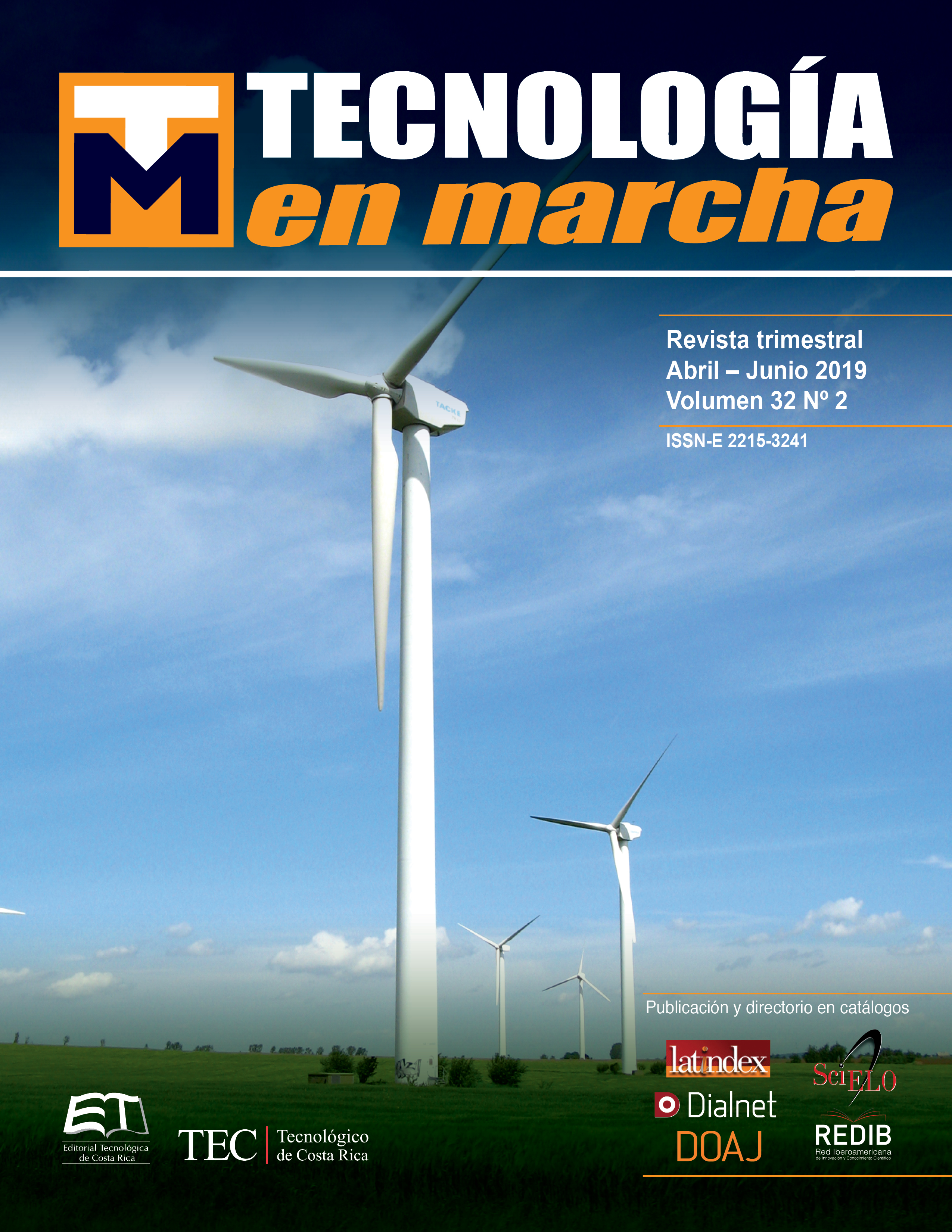Utilización de un dispositivo electrónico de última generación para la determinación experimental del coeficiente de convección de una placa plana de aluminio
Contenido principal del artículo
Resumen
Este artículo considera la comprobación de funcionamiento de una matriz de sensores capaces de medir la temperatura, dispositivo diseñado y creado por el departamento de ingeniería electrónica de la Universidad de Málaga, España. Para las pruebas se utiliza un chorro de aire a una temperatura menor al ambiente, que impacta una placa plana de aluminio ubicada sobre dichos sensores. Modificando la relación adimensional entre la altura y el diámetro de salida del chorro (H/D) y con un adecuado procesamiento de datos mediante el uso de Matlab se encuentran diferentes curvas características. Además, se determina el coeficiente de convección mediante la relación entre la pendiente de la gráfica resultante de la evolución temporal de la temperatura y las propiedades físicas del aluminio
El objetivo principal del trabajo es la comprobación de la funcionalidad del dispositivo electrónico creado por la Universidad, el cual se realiza con éxito. Además, se utilizan técnicas de visualización para comprobar el comportamiento del chorro de aire fresco al impactar la placa. Tanto el dispositivo, como la utilización de chorros de aire tienen amplias funcionalidades en la industria (refrigeración, calefacción, procesos de secado, limpieza, entre otros) y algunas más específicas para el dispositivo como la medición a tiempo real de temperaturas bidimensionales en zonas de difícil acceso.
Detalles del artículo
Los autores conservan los derechos de autor y ceden a la revista el derecho de la primera publicación y pueda editarlo, reproducirlo, distribuirlo, exhibirlo y comunicarlo en el país y en el extranjero mediante medios impresos y electrónicos. Asimismo, asumen el compromiso sobre cualquier litigio o reclamación relacionada con derechos de propiedad intelectual, exonerando de responsabilidad a la Editorial Tecnológica de Costa Rica. Además, se establece que los autores pueden realizar otros acuerdos contractuales independientes y adicionales para la distribución no exclusiva de la versión del artículo publicado en esta revista (p. ej., incluirlo en un repositorio institucional o publicarlo en un libro) siempre que indiquen claramente que el trabajo se publicó por primera vez en esta revista.

